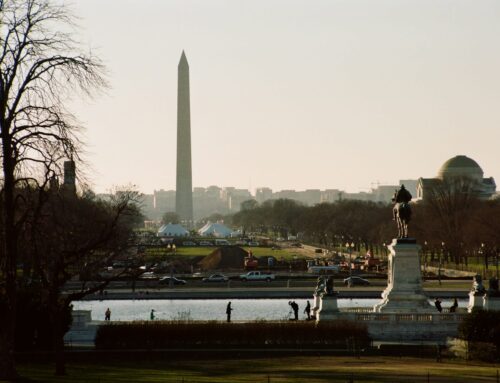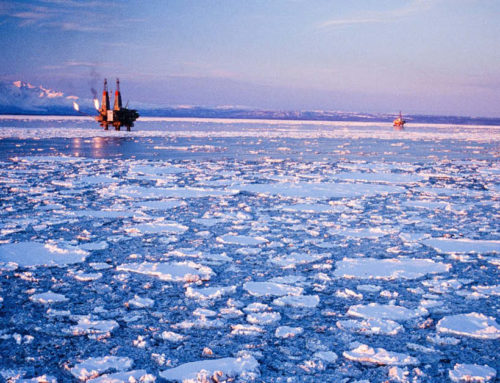“The Bridge to Nowhere” has been a much-used phrase by the McCain Campaign. Keith Ashdown, chief investigator for the watchdog group Taxpayers for Common Sense, says he coined the phrase in 2004 after a couple of beers.
Even at $223 million, the earmarks for the bridge that was supposed to connect Ketchikan to Gravina Island, Alaska, population roughly 50, has had remarkably durable legs as a campaign issue. Every day, another news organization affirms that Sarah Palin was for it before she was against it. And every day, she repeats that she told Washington, thanks, but no thanks.
(Soundbite of cheering)
Governor SARAH PALIN (Republican, Alaska; Vice Presidential Nominee): I told Congress, thanks, but no thanks on that bridge… I did tell Congress, thanks, but no thanks for that Bridge to Nowhere… I told the Congress, thanks, but no thanks on that Bridge to Nowhere.
(Soundbite of cheering)
SIEGEL: One reason this is so important to the GOP is that as late as 2006, Palin was taking a very Alaskan view of the bridge project.
Gov. PALIN: I’m not going to stand in the way of progress, that our congressional delegation, in the position of strength that they have right now, they’re making those efforts for the state of Alaska to build up our infrastructure. I would not get in the way of progress.
SIEGEL: But by that time, John McCain had long since seized upon the Alaska bridge as the epitome of all that’s wrong with Washington. When I watched him campaign in South Carolina almost a year ago, it was the centerpiece of his speech.
Senator JOHN McCAIN (Republican, Arizona; Presidential Nominee): The tipping point, my friends, was the $233-million bridge in Alaska to an island with 50 people on it, the so-called Bridge to Nowhere. One Sunday not that – couple of years ago, on the front of Parade, the insert in everybody’s Sunday newspaper was the picture of the bridge.
SIEGEL: That Parade magazine cover was published in November 2005. So the tipping point, according to McCain was a year before Palin ran in Alaska supporting the bridge. And in fact, John McCain had picked up on the Bridge to Nowhere more than a year before that.
Keith Ashdown, the chief investigator for the watchdog group Taxpayers for Common Sense, is credited with naming the bridge. It started in 2002, he says, when he got a tip about a huge pork barrel project.
Mr. KEITH ASHDOWN (Chief Investigator, Taxpayers for Common Sense): We spent several months trying to figure out, you know, how could we make this sexy, so to speak, for the lower 48 states and for the news media. And one night, had a couple beers in me, and I got a little more creative and I came up with the term Bridge to Nowhere.
SIEGEL: 2004, April 10th, 2004 an article appears in the New York Times in which you’re quoted. Tell me about that.
Mr. ASHDOWN: Tim Egan, he’s a New York Times reporter who’s an expert on Alaska, all things Alaska, and he’d read our write-up on the bridge. And he contacted me and he said he wanted to do a story on it. He wrote this excellent piece which I think basically was its introduction to the national audience. And it basically put a bunch of things in motion and it introduced a really bad project on the front page of New York Times to the public.
SIEGEL: Describing it as?
Mr. ASHDOWN: The Bridge to Nowhere.
SIEGEL: Called by its critics, The Bridge to Nowhere, that was April 10th. The following day, April 11th, 2004, John McCain goes on “Meet the Press” -he’s interviewed by the late Tim Russert – and talks about ending pork barrel projects, wasteful spending.
(Soundbite of TV show, “Meet the Press”)
Sen. McCain: Well, now we’re employing a strategy of guns and pork. Look at the highway bill that had 3,000 pork barrel projects on it including bridges to nowhere in Alaska. So, we’re going to have to make some tough choices.
SIEGEL: You must have felt like you just completed a touchdown pass, you’re thinking…
Mr. ASHDOWN: Yeah, I thought it was done.
SIEGEL: Yeah.
(Soundbite of laughter)
SIEGEL: This phrase has been caught by someone aspiring to the White House.
Mr. ASHDOWN: Yeah. You know, the senator has been committed to cutting wasteful spending for a long time. And I think it coalesced a lot of things that he had seen into, you know, one word.
SIEGEL: Senator McCain has been assailing the Bridge to Nowhere as the epitome of what’s wrong with Washington ever since the spring of 2004. In November 2006, Sarah Palin is elected and from what we can tell, she was supporting it.
Mr. ASHDOWN: Right. As anyone running for statewide office in Alaska, to oppose a project like this would have been a political suicide. And she actively was an advocate for it. You know, wearing shirts that said I’m from nowhere Alaska to saying, we have to support our congressional delegation, their efforts to bring money back to our state. That’s progress. It’s the term she used.
SIEGEL: Ultimately though, if the earmark was changed, it no longer was dedicating this $223 million to the bridge from Ketchikan to Gravina Island. But Alaska still got the money.
Mr. ASHDOWN: That’s right. The next year, they changed the language. And it redirected it to Alaska but it wasn’t earmarked legally to that one project.
SIEGEL: Today, Senator Jim DeMint of South Carolina, Republican of South Carolina, writes an op-ed page piece in the Wall Street Journal, which he says, yeah, she was for it but then after she realized the problem with earmarks, Governor Palin was against it. She killed the bridge and saved taxpayers money.
Mr. ASHDOWN: The senator is a friend of taxpayers, but that’s an incorrect statement. It was good that this project was killed by Governor Palin, but it’s not correct that it saved any money. It’s redirected the money to other alternatives in Alaska and has gone to one project that’s on the Gravina Island, it’s a road project.
SIEGEL: Was there any moment in Governor Palin’s handling of this appropriation that can be construed as her saying thanks, but no thanks?
Mr. ASHDOWN: No. She killed the Bridge to Nowhere – that is correct. To say thanks but no thanks would imply that they didn’t take the money, and they got every dime of it.
SIEGEL: That’s Keith Ashdown of Taxpayers for Common Sense talking with us about the Bridge to Nowhere, a term that he is credited with coining for the notorious Alaska earmark.










